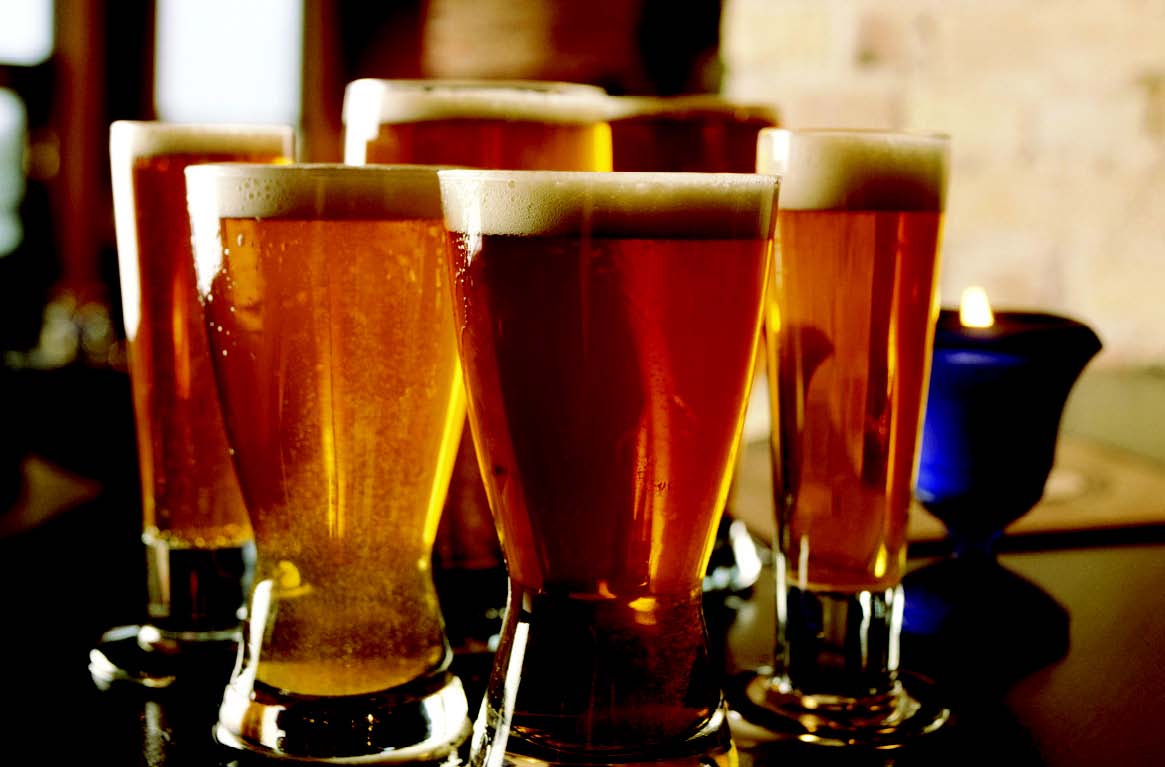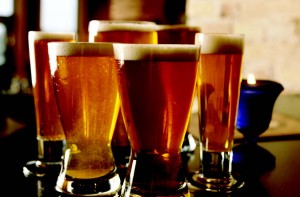
By Jack Kenny
A couple of weeks ago I had the pleasure of purchasing a new beer just off the truck and into the store. I didn’t have to wonder whether it was worthy. The maker is New England Brewing of Woodbridge, Connecticut. The quality bar is high at that place, and I was pleased to be among the first to drive home with the new release. The brew is Premeditated Murder, a barleywine described on the label as “full-bodied, rife with ominous portent.” How, I wondered, did a brewer get that name past the authorities. The shopkeeper pointed to the label: A crow thinking about meeting with his fellow corvids. Get it? A murder of crows? Premeditated? Gotta give those brewers credit.
What’s in the bottle? Oh my. Barleywine is a high-strength ale by tradition, brewed with mountains of malt and just enough hops to curb the sweetness. Alcohol is strong in the nose and palate, and in Premeditated Murder the nose is massive and exalted malt, the palate winey with a hint of nut. This is a beer to enjoy on a cool night or a frozen night in a measured dose. Buy it now and put it in the cellar. Wait five or seven years. See what happens.
It is the richness of the malt, rather than the floweriness of the hop, that characterizes winter ales. These things are meant to be sustaining rather than refreshing. — Michael Jackson, December 1990
The English traditionally have made their winter ales with the four basic ingredients of beer: malted barley, hops, water, yeast. Other European cultures experimented with herbs, fruits and spices over the centuries. (The Brits did add crab apples to their wassail bowls, those Christian holiday troughs of ale or wine.) The Americans, who undertook to resurrect beer styles over the past three decades and more, have chosen to revive the wassail traditions and flavor their winter brews with a variety of spices and other flavors. Still, as Jackson said, it is the richness of the malt – and the resulting strength – that gives character to the winter ale.
Barleywines are favorites in the winter because they dispel the feeling of cold. A good number of US brewers create such strong ales, but they are not popular. The crowds go for the winter ales of lower strength, flavored or not. Sierra Nevada’s Celebration Ale, high on my list of favorites, is brewed without spices, as are Magic Hat’s Heart of Darkness, Brooklyn Brewing’s Winter Ale, and Sebago’s Slick Nick. It is possible to brew a holiday ale without additives and still capture the spirit of the season, even allowing the play of yeast and grain to produce aromas that smack of winter.
They sat down to a substantial supper, and a mighty bowl of wassail, in which the hot apples were hissing and bubbling. — Charles Dickens, The Pickwick Papers, 1836
American craft brewers thought of mulled wine when they made their spiced ales. That’s my guess. Spiced beer was not a tradition on this continent in recent memory. (Flavorful beer was not a tradition on this continent until the craft brewers resurrected the pre-Prohibition traditions and brought in those from abroad.) Brewers such as Harpoon and Samuel Adams chose to augment their seasonal offerings by adding the mulling spices, combinations of cinnamon, ginger, nutmeg, clove, even vanilla and cocoa. Sam Adams has four winter ales, including a barleywine, which feature combinations of typical mulling spices. New this year is Merry Mischief, a stout made with clove, nutmeg, ginger, and cinnamon. Harpoon’s Winter Warmer, brewed since 1988, features cinnamon and nutmeg.
OLD NORSE
Sjur Soleng, co-owner with Rich Dunn of Ninety9 Bottles in Norwalk, Connecticut, was born in Norway and remembers the tales told by his father of holiday celebrations in the old country. Local folks brewed their own ales, and visited neighbors at Christmas time, passing the bowl, adding to the pleasure, warming the northern nights with the gift of the jul øl.
He shared some history: After the Norse made the shift to Christianity; laws were passed regulating the brewing of beer at Christmas. The beer was brewed with the farm’s best barley to be strong, and could be seasoned with tobacco, syrup, sugar, juniper, and herbs. One report stated that the beer had to use as many kilos of grain as the master and mistress of the farm weighed together. I would like to have tasted that. The brew vessel was consecrated with fire. The first beer was thrown outside to appease the trolls. The strength of the beer said something about the honor one offered to Christ and Mary. Weak beer brought shame upon the farmer.
We live in gentler times, but we still spice our ales, and sometimes not, in the cold, dark days of winter. Sustaining rather than refreshing, as Jackson said. Look for me by the fireplace with a murder in a snifter.
thebeercolumn@gmail.com



